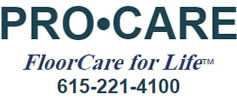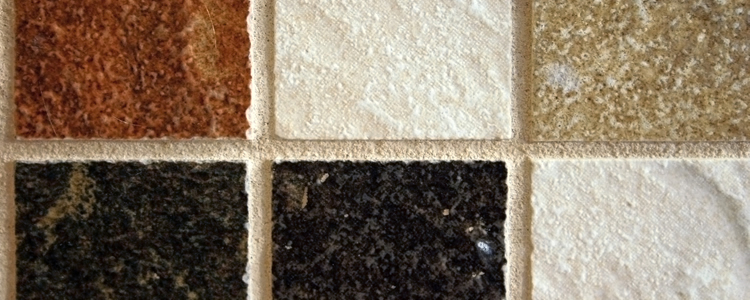
Tile flooring is one of the most popular options in high-traffic areas like kitchens, foyers and hallways because it’s so durable and easy to clean. The grout between those tiles is a different story.
The dirt and grime of everyday life can cause grout to discolor over time and even stain. In wet areas like kitchens, bathtubs and showers, grout can be a breeding ground for mold and mildew. The good news is that if you establish a daily routine for cleaning and use the right cleaners, you can maintain the grout and keep your floors, countertops and bathrooms looking great.
Know Your Tile
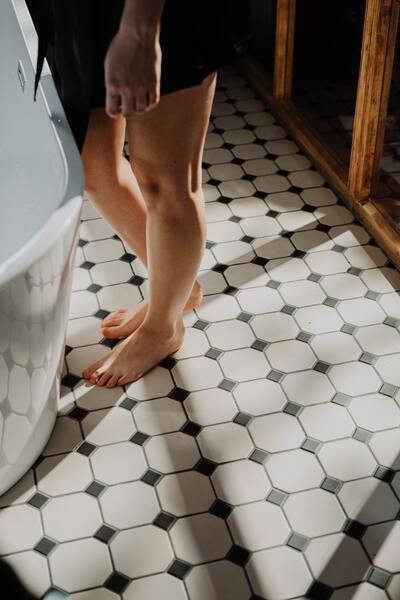 Ceramic Tile – Ceramic tile is made from clay and other natural resources. This kind of tile is easy to install and clean and comes in hundreds of styles and colors to fit most any design scheme. It is one of the most common tile types found in homes because it is suitable for most applications. Given its durability, ceramic tile is perfect for kitchens, bathrooms and entryways. The most attractive features of ceramic include its long lifespan, it’s versatility of use, and its high resistance to scratches and abrasion.
Ceramic Tile – Ceramic tile is made from clay and other natural resources. This kind of tile is easy to install and clean and comes in hundreds of styles and colors to fit most any design scheme. It is one of the most common tile types found in homes because it is suitable for most applications. Given its durability, ceramic tile is perfect for kitchens, bathrooms and entryways. The most attractive features of ceramic include its long lifespan, it’s versatility of use, and its high resistance to scratches and abrasion.
Note: A popular type of ceramic tile is terra cotta, which can be a glazed tile or unglazed quarry tile. It is important to understand the difference between glazed and unglazed ceramic tile. While unglazed is considered more artistic and rustic, glazed provides more protection for a longer lasting floor.
Porcelain Tile – Technically, porcelain is a type of ceramic. Both are made by baking clay at a super-high temperature. But porcelain tiles are made of a denser, more refined clay and are fired at a higher temperature. This makes it less porous resulting in it being less prone to staining. Porcelain tile is appealing because of its ability to emulate the elegant finish of natural stone, brick and wood – without the amount of maintenance and upkeep. It also comes in a variety of colors, designs and styles, making it versatile for most any space, from baths and kitchens to high-traffic areas – even backsplashes.
Know Your Grout
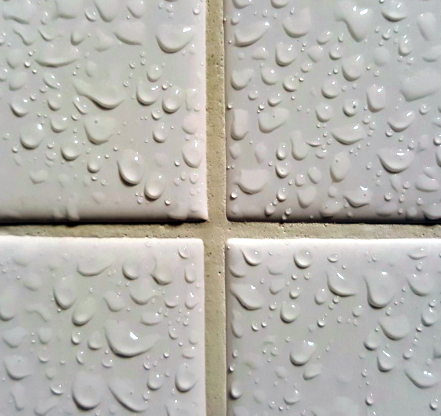 Portland Cement Based Grout – Portland cement hardens through chemical reaction with mixing water, provides strength and durability, and acts as the binding agent that holds all the other components together (bonds the tile to the intended surface – floor, wall, or other application. Sanded grout is the most common grout used for ceramic tile, stone and any material with a grout joint 1/8 inch or larger. This category of grout is made of Portland cement, sand and other additives. Sanded grout is very absorbent and, if not sealed, will soak up stains, dirt and any other liquid spilled on its surface. Since the grout is made with sand, it will scratch polished marble. Non-sanded Portland cement based grout consists of fine fillers, water retentive additives and colored pigments.
Portland Cement Based Grout – Portland cement hardens through chemical reaction with mixing water, provides strength and durability, and acts as the binding agent that holds all the other components together (bonds the tile to the intended surface – floor, wall, or other application. Sanded grout is the most common grout used for ceramic tile, stone and any material with a grout joint 1/8 inch or larger. This category of grout is made of Portland cement, sand and other additives. Sanded grout is very absorbent and, if not sealed, will soak up stains, dirt and any other liquid spilled on its surface. Since the grout is made with sand, it will scratch polished marble. Non-sanded Portland cement based grout consists of fine fillers, water retentive additives and colored pigments.
Epoxy Resin Grout – Epoxy grout is a waterless, two-part grout made with epoxy resins and a hardener. They are waterless materials that, when fully cured, are stain- and mildew-resistant. They are less absorbent than cement-based grouts, are easily cleaned, and are resistant to chemical damage. Epoxy grouts are particularly suited to tile and stone on kitchen countertops, backsplashes, and bathrooms, or anywhere stain or chemical resistance is required.
Furan Grout – Furan grouts are similar to epoxy, but are composed of polymers of furfuryl alcohol, which are highly chemical resistant. They are rarely used for residential installation, but are used for industrial projects. It is only available in black.
Caulking – This grout substitute has excellent flexibility. It’s primary ingredient, silicone, is able to stretch, putting less stress on bonds and points of contact between surfaces. Caulking allows for flooring movement and prevents tile and grout from cracking. Chosen for its superior durability, caulking won’t crack or peel. Ultimately, this product is extremely weather and temperature resistant and consistently offers less than 3% shrinkage.
Basic Tile and Grout Care Tips
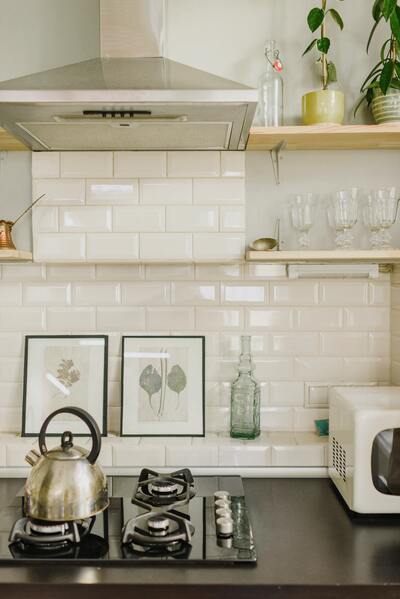 Tile Countertops
Tile Countertops
- It is never recommended to use any general cleaners on tile and grout that are not specifically formulated for these surfaces. Such cleaners can break down the sealer, thereby removing its protective properties and making the tile and grout susceptible to stains. Worse yet, many cleaning products, including those that contain lemon, vinegar, bleach or ammonia, can etch away the polish, discolor the surface, or even scratch your tile.
- Apply an approved cleaner with a clean soft cloth for best results. Too much cleaner or soap may leave a film and cause streaks.
- After washing the soap solution off, rinse the surface thoroughly and dry it with a soft cloth.
- Be sure not to use scouring powders, creams or bristle brushes; these products contain abrasives that may scratch the surface of your countertop.
Tile Floors
- The first step for maintaining tile floors is to dust mop them frequently, using a clean, non- treated, dry dust mop or vacuum.
- The purpose of regular mopping is to remove sand, dirt, and grit, which, due to their abrasiveness, do the most damage to tile surfaces.
- Mats or area rugs placed in entry areas will help to catch the sand, dirt, and grit that is most likely to scratch a tile floor. If a mat or rug is used, be sure that the underside of the item is a non-slip surface.
- It is highly recommended you use a cleaner that is formulated for tile floors. Using the wrong cleaner can result in build-up and slippery surfaces.
- Mix your tile and grout cleaning product with water. Following the instructions on the bottle, apply, let stand for 3-5 minutes, then mop it up.
- Be sure to rinse your floors with clean water when done, then dry with a mop and wipe clean with a clean cloth.
- Be sure not to use scouring powders, creams or bristle brushes on your tile floors. These products contain abrasives that may scratch the surface.
Tile Bathroom and Other Wet Areas
- Soap scum on tile surfaces can be minimized by using a squeegee after each shower and counter use.
- To remove this residue, use a non-acidic soap scum remover or a solution of ammonia and water (about 1/2 cup ammonia to a gallon of water). Be aware that frequent or over-use of an ammonia solution may eventually dull the surface of the tile.
- Open a window or run the exhaust fan for 10-20 minutes after a shower to quickly pull humidity and moisture out of the room and help prevent mold growth on the grout.
*Note about Chelating Agents
This is an ingredient found in most store bought cleaners. It dissolves mineral deposits in hard water to allow the product to work easier and better. Since ceramic and porcelain tile is made up of minerals, most store bought cleaners will eventually streak and dissolve any stone on which it is used.
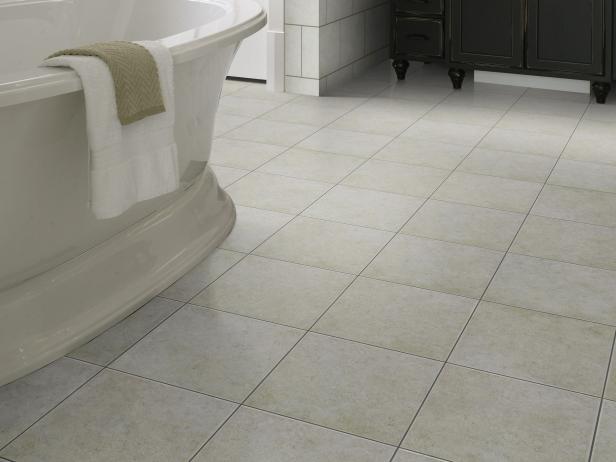 Seal For Success
Seal For Success
Sealing your grout is a must because grout is porous, allowing it to trap dirt and become a breeding ground for bacteria, mold and fungus. Not only does grout sealant protect the grout, it helps keep you and your family healthy.
Professionals recommend you seal your mid to high-traffic areas no less than once per year. It is best to schedule that service after a deep cleaning of the tile and grout. For low traffic areas, resealing every 4-5 years is enough.
There are 3 types of Sealers
- Coating Sealers are a thin layer on the grout surface that does not allow oil, water or dirt to penetrate the grout pores. There are 2 coating sealers available: permanent and strippable.
- Permanent Coatings are difficult to remove. They are made of epoxies, polyurethanes and other materials. Because they are so difficult to remove, this type is not always recommended.
- Strippable Coatings are made of styrene, acrylics, polyethylene and other polymers and are easier to remove. Most are water based.
- Color Sealers bond to the grout, filling the pores while keeping the same look and texture of the original grout. Color sealers allow you to change the grout from dark to light or light to dark.
- Penetrating Sealers are made to penetrate the grout and deposit particles that will protect the grout; preventing water and dirt from soaking deep and leaving stains or bacteria. These types of sealers mostly contain silane, siloxane, silicone, or some other silicon derivative.
